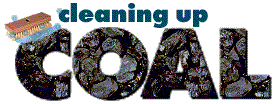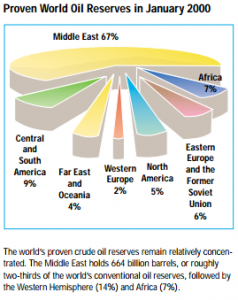Ten Billion: A Kick in the Ass We’ve Needed
[Note: You can join Professor Stephen Emmott for a @reddit AMA TODAY Friday 04-DEC-2015 at 4:00 pm (UK) / 11:00 am EST.]
If we learned a cataclysmic, extinction-level event was hurtling toward our planet, how would we respond? How should we respond if we know we can minimize the threat?
This is in essence the question asked of us by Ten Billion, a film based on Professor Stephen Emmott’s eponymous book. The film premieres this Saturday at 22:00 UTC on SkyTV.
I was fortunate to screen Ten Billion recently. Crafted by director Peter Webber, it deftly evokes Koyaanisqatsi (1982), its name based on the Hopi word for “life out of balance.” Ten Billion similarly shows us a world even more off kilter, its resources relentlessly consumed by humans. Where Koyaanisqatsi‘s Philip Glass score was reflective and elegiac, Ten Billion‘s Alex Heffes’ score underlines the mounting urgency of crises.
These crises are many, pegged directly to population growth and its corresponding rate of consumption. The film’s use of a timeline depicting past and future projections of population are effective, like watching the tipping point of a virus infecting its host.
Effective, too, are comparisons between recent and archival photos depicting the changes wrought by humans. Evidence of glaciation loss is horrific, as one example.
Photos of earth from the International Space Station remind us that we are all in this together. There is no escape, no way around this; this is home, and we must work together to save it.
My sole critique is about the diversity of “climate migrants” — so-called in the film, but we know now that many who flee political instability are really “climate refugees.” Ten Billion depicts the plight of peoples affected most by climate change. Most live closer to the equator, and are therefore darker skinned. They have been too easily ignored by light-skinned northern cultures. We see that now with the response to Syrian refugees, whose home country began to fall apart due to severe drought long before overt military action began against Bashar al-Assad’s regime and ISIS.
We also see the same blindness in western response to world-record typhoons Bopha, Haiyan, Hagupit, Koppu hitting the Philippines year after year; cyclone Pam nearly wiping away Vanuatu this past March; and the combination of severe drought and catastrophic flooding affecting Chennai, India even now. There is little if any news coverage here in the U.S., and a nominal amount in the U.K. and EU, as if Asians and Pacific Islanders don’t even exist though they number in the billions. We ignore our role in exporting not only manufacturing jobs but associated air pollution to India and China.
Ten Billion would have been more effective holding a mirror up to the pale faces of northern climes, forcing them to see they, too, are affected. Whites fled both New Orleans and the Gulf Coast ahead of hurricanes like Katrina. They fled the coast of New Jersey and New York after Hurricane Sandy — some who stayed and returned to the affected area are still dealing with post-storm damage years later. There will be more internal climate refugees again whenever the next Category 4 or 5 hurricane hits U.S.
And there will be refugees from drought, when the need for water in states like California finally exceeds the ability of other states to sell and ship enough to meet the shortfall. We are not prepared to deal with this generation’s version of the Okies fleeing a new Dust Bowl.
Until the west — especially the U.S. based on its consumption habits and political reach — realizes its own pale skin is invested in these crises, it may continue to look the other way while making idle greenwashed gestures like COP21 in Paris this week.
I am on the fence about Emmott’s understatement about his own background in this film. If he had been more explicit about his role as a scientist, would the public take his plea in Ten Billion more seriously?
It’s important to note this film may be part of a growing trend — scientists bypassing the suffocation of politicized corporate media, in order to reach the public.
We’ve seen this recently with the op-ed by NASA Jet Propulsion Laboratory/Caltech senior water scientist Professor Jay Famiglietti, warning California only had one year of water left in its reservoirs. Famiglietti didn’t wait for a report issued from either NASA or academia to filter its way into the stultifying news reporting process. He cut out the middle men and wrote an op-ed for the Los Angeles Times to convey urgency and effect immediate action.
Some will criticize this film as expository and hortatory, failing to provide solutions to the crises we’ve created. This is not that film. This is not meant to guide us toward help, when so many other scientists have already told us for decades what is wrong and what action we must take to minimize the threat to our planet and ourselves.
This film is meant to be a much-needed kick in the ass, to propel us to action appropriate to a cataclysmic, extinction-level event.
Because as Emmott says, in concise terms familiar to civilians and scientists alike, we’re fucked if do not take immediate, appropriate action.
You can join Professor Emmott for a @reddit AMA TODAY Friday 04-DEC-2015 at 4:00 pm (UK) / 11:00 am EST. Emmott also has an op-ed today in The Guardian.

![[photo: macwagen via Flickr]](https://www.emptywheel.net/wp-content/uploads/2015/09/VWBug_macwagen-Flickr.jpg)


![[Map, national hydrologic assessment via NOAA-NWS]](http://www.emptywheel.net/wp-content/uploads/2013/04/NWS_USSpringFloodRisk_21MAR2013.jpg)
![[Graphic: NOAA Nat'l Operational Hydrologic Remote Sensing Center]](http://www.emptywheel.net/wp-content/uploads/2013/04/NOAA_ForecastSnowDepthMnDak_18APR20131.jpg)


